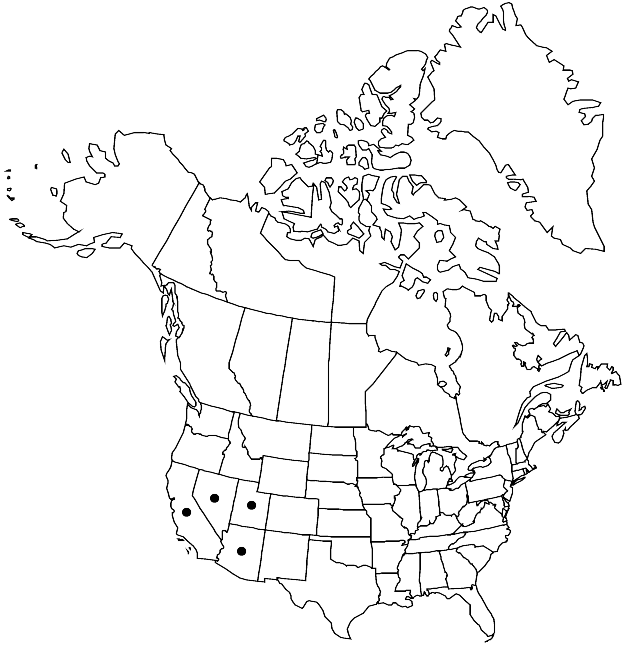Caulanthus cooperi
Ann. Missouri Bot. Gard. 9: 293. 1923.
Annuals; puberulent or glabrous (trichomes simple and subappressed, and 2-rayed). Stems erect to ascending (often flexuous, weak, often tangled with desert shrubs), usually branched distally, 1–8 dm, glabrous or puberulent. Basal leaves rosulate; petiole 0.3–2.5 cm; blade oblanceolate to spatulate, 0.7–6 cm × 2–27 mm, margins usually coarsely dentate or somewhat pinnatifid, rarely entire, (surfaces glabrous). Cauline leaves (median) sessile; blade lanceolate or oblong, 1.5–7.5 cm × 5–20 mm (smaller distally, base amplexicaul to sagittate), margins dentate or entire, (surfaces glabrous). Racemes (lax), without a terminal cluster of sterile flowers. Fruiting pedicels reflexed, 1–4.5 mm, usually glabrous, rarely puberulent. Flowers: sepals erect, (purplish or yellow-green), narrowly lanceolate, 3–6.5 × 0.8–1.5 mm (equal); petals yellow-green to purplish (often with purple veins), 4.5–9 mm, blade 2–3 × 0.7–1.5 mm, not crisped, claw narrowly oblong-oblanceolate, 2.5–7 × 1–1.5 mm; filaments slightly tetradynamous, median pairs 2–4.5 mm, lateral pair 1.5–3.5 mm; anthers oblong, equal, 1.5–2 mm. Fruits usually reflexed, rarely divaricate (often subfalcate), terete, 2–6 cm × 1.5–2.5 mm; valves each with prominent midvein, (glabrous or puberulent); ovules 24–48 per ovary; style 0.2–2.7 mm; stigma slightly 2-lobed. Seeds 1–2 × 1–1.2 mm. 2n = 28.
Phenology: Flowering (Jan-)Feb–Mar.
Habitat: Desert shrubs, woodlands
Elevation: 600-2300 m
Distribution

Ariz., Calif., Nev., Utah, Mexico (Baja California).
Discussion
Caulanthus cooperi is distributed in the Colorado and Mojave deserts in western Arizona, central and southern California, southern Nevada, and southern Utah.
Selected References
None.